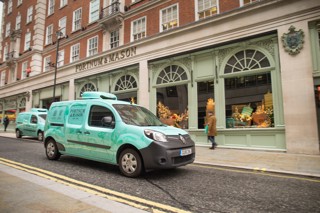Fleet and procurement managers are underestimating the complexities of selecting a vehicle livery partner, according to PVS Fleet Solutions.
Now Marcus Puddy, who has a 30-year fleet industry career behind him and founded the PVS Group, which includes PVS Fleet Solutions, four years ago, has identified the five key questions that all fleet and procurement managers need to ask potential vehicle livery suppliers to save themselves “money and stress”.
He said: “Supplier capability within the UK livery market varies enormously and exposes fleets to the risk of spiralling costs. Any savings at the time of quotation can be eroded very quickly. Poor livery printing and application, resulting in damaging the appearance of a brand on vehicles, are costs that are very real and substantial. However, they are difficult to calculate.”
Puddy highlighted other ‘costs’ that could quickly turn into an expensive nightmare for fleet and procurement managers in a ‘price-focused’ sector where in-depth interrogation of livery suppliers’ ability to deliver best-in-class was business-critical.
They include:
· Poor creative where the livery fails to deliver a company’s marketing message
· A lack of livery fitting resource resulting in delays in putting vehicles on the road
· Failing livery through poor application that must be repaired resulting in costly vehicle downtime and business disruption
· A lack of support for crash-damaged vehicles requiring replacement livery meaning delays in vehicles returning to the road - or vehicles making an operational return with incomplete livery causing brand damage
· In-fleet re-branding, which occurs regularly, being hugely expensive. When vehicles are on the road UK-wide, making even a minor change to the livery - eg: a telephone number change - can be a major undertaking involving logistical nightmares.
Puddy said: “Not all livery companies are the same which, unfortunately, is something that too many fleet and procurement managers believe. As a result, livery is frequently the last item considered during the vehicle procurement and supply chain process. But vehicles are mobile billboards and deliver huge value in promoting a business.
“Barriers to livery market entry can be low and the rewards potentially high. As a result, there are always new entrants seeking to capitalise. What’s more, today’s digital marketing techniques enable some suppliers to present themselves as bigger and more experienced companies that they actually are. The lower overheads of a small livery company enable it to price aggressively. But that can spell danger for fleet and procurement managers.”
Puddy claims that asking five key questions - and investigating the answers - will enable potential vehicle livery partners to provide evidence of their capabilities and allay any fleet and procurement manager scepticism.
In addition to future-proofing a supplier partnership by investigating the long-term stability of a potential vehicle livery provider, Puddy recommends:
· Clarifying that the business employs a dedicated creative designer experienced in creating high impact vehicle graphics in line with an existing marketing plan and brand dynamics, but with an eye on the latest legislation and fleet safety requirements. Always ask for testimonials.
· Ensuring a service level agreement covers the entire supply process including, for example, the livery crash repair process from order notification to fitment time UK-wide. Always obtain a copy of the agreement together with user testimonials.
· Investigating vehicle livery production capacity including checking the number of large format printers and vinyl plotters operated, current operating capacity, the ‘up to date’ service documentation for equipment and how many dedicated full-time production operators are employed.
· Checking the number of dedicated vinyl applicators directly employed rather than placing a reliance on the sub-contractor network and the training fitters have received including when, by whom and any accreditation/certification.
· Requesting information on workshops, storage and logistics including: the number of vehicles that can be accommodate at any one time in workshops, compound security, vehicle transportation/logistics capability and provider details and whether ‘vehicle manufacturer destination code status’ is available so new vehicles requiring livery can be delivered direct to supplier from import location. Additionally, request customer testimonials.




















Login to comment
Comments
No comments have been made yet.